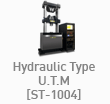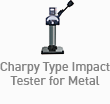Tags
- #UniversalMaterialTestingMachine
- #MaterialPropertiesTestingMachine
- #MaterialTestingMachine
- #CompressionTestingMachine
- #UTM
- #HardnessTestingMachine #TensileTestingMachine
- #TensileTest
- #TensileStrength
- #HydraulicFatigueTestingMachine
- #HydraulicUniversalMaterialTestingMachine
- #FatigueTestingMachine
- #HydraulicServoUniversalMaterialTestingMachine
- #HydraulicServoTensileTestingMachine
- #EnvironmentalChamber
- #ISO6259
- #ISO1979
- #PipeTensileTest
- #PinGrip
- #PipeTensile
- #PlasticPipeTensileTest
- #PolyolefinPipe
- #SALT
| [ISO] ISO 6259-3 the international test method for determining the tensile properties of polyolefin heat- | |
|---|---|
| Writer : 관리자(salt@light-salt.kr) Date : 24.04.29 Hit : 13 | |
| Tags : #UniversalMaterialTestingMachine,#MaterialPropertiesTestingMachine,#MaterialTestingMachine,#CompressionTestingMachine,#UTM,#HardnessTestingMachine #TensileTestingMachine,#TensileTest,#TensileStrength,#HydraulicFatigueTestingMachine,#HydraulicUniversalMaterialTestingMachine,#FatigueTestingMachine,#HydraulicServoUniversalMaterialTestingMachine,#HydraulicServoTensileTestingMachine,#EnvironmentalChamber,#ISO6259,#ISO1979,#PipeTensileTest,#PinGrip,#PipeTensile,#PlasticPipeTensileTest,#PolyolefinPipe,#SALT | |
| Attachments : | |
|
Hello~! We are SALT CO., LTD. a specialized manufacturer of material testing machines. Today, we would like to introduced ISO 6259-3, the international test method for determining the tensile properties of polyolefin heat-resistant pipes according to ISO 6259-3
what is ISO 6259?
ISO 6259 is a test standard for determining the tensile properties of polyolefin and heat-resistant pipes. Specifically, this test specifies the stress at yield and elongation at break. The standard is divided into three methods:
This is a general test for pipes.
This is for PVC-U (unplasticized polyvinyl chloride), PVC-O (oriented unplasticized polyvinyl chloride), PVC-C (chlorinated polyvinyl chloride), and PVC-HI (high-impact polyvinyl chloride) pipes.
This is for polyolefin pipes.
What is the purpose of ISO 6259 testing?
Tensile testing of specimens is used to understand the processing state of materials. The properties obtained from standard specimens and standard processing conditions may sometimes differ from the actual properties within the pipe. This is because the processing conditions between injection-molded specimens and extruded pipes can be quite different. To better understand these properties, specimens are extracted longitudinally from the pipe wall. Different specimen shapes are used depending on the pipe material and wall thickness, each designed to fit into the respective specimen holder. Deformation of the specimen is directly optically measured.
Specimens for ISO 6259-3:
Typically, specimens for pipe tensile tests have holes. These holes are used to fix the specimen to the testing machine, usually positioned at both ends of the specimen. These holes ensure proper fixation during testing and accurate measurement of the pipe's tensile properties. The size and position of the holes are determined according to the standard of the test and are designed to be compatible with pin grips or other fixing devices. These holes play a crucial role in preventing detachment of the pipe during testing, ensuring stability, easy fixation of the test specimen, and uniform stress distribution during testing.
Appropriate grips for ISO 6259-3?
↑SALT's Pin Grip
Pin grips are used in conjunction with the holes located at both ends of the test specimen. These holes allow the pins inside the grip to be inserted into the specimen, securing the pipe during testing. Pin grips play a vital role in ensuring stability during testing and preventing detachment of the specimen during tensile testing.
SALT's Pin Grip
SALT's Pin Grip
Specimen
Salt Co., Ltd.'s all-purpose material tester provides a variety of grips, extensometers and test solutions to meet the requirements of physical property testing of various materials.
"We value our relationship with you more than just selling our products."
Salt-s@Light-Salt.kr www.light-salt.kr |
|
| Prev | ASTM F88 Standard Test Method for Seal strength of flexible barrier materials |
| Next | ASTM D395 Standard Test Methods for Rubber Property Compression Set |
|
|
































































































































